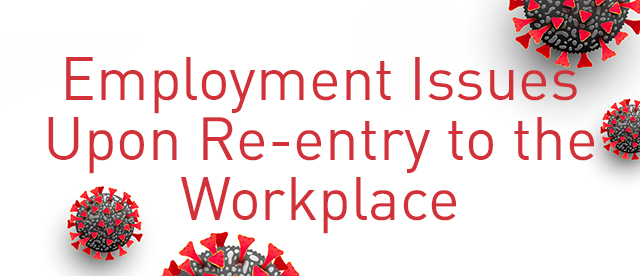Webinar: Employment Issues Upon Re-Entry to the Workplace
- When: Apr 30, 2020

The COVID-19 pandemic has changed the workplace landscape. While the anticipated re-opening of the economy is on the horizon, employers must be aware of a number of employment issues when employees begin to re-enter the workplace. This webinar addresses the most common questions employers are currently asking about what is and is not required, allowed, or recommended when bringing employees back to work. We will provide an overview of the following topics during this free webinar:
- Conflicting Shelter Orders – Which one applies and which order do we follow to bring employees back to work?
- What can an employer do if employees refuse to return to the worksite?
- May a furloughed employee choose to stay on unemployment instead of returning to work?
- Return-to-Work Social Distancing Policies and Protocols – Are they required or recommended?
- What are the OSHA and CDC guidelines for maintaining workplace safety and reducing the spread of COVID-19?
- What About Employee Privacy – Can an employer obtain medical information or screen employees before they enter the worksite?
- What are the EEOC and DFEH guidelines regarding reasonable accommodations for employees who may be at risk if they return to the worksite?
- Do OSHA reporting and workers’ compensation benefits apply if an employee contracts COVID-19 at work?
- Are employees still eligible to take emergency paid sick leave or emergency FMLA leave under the FFCRA once the shelter orders are lifted?
- What sick pay and statutory leave benefits are available to laid off employees who are rehired?
- What policies should employers review and update based on the impact of COVID-19?
This webinar was presented live on April 30, 2020. You can view a recording of the webinar on our YouTube page. Please keep in mind that this is a fluid situation and information is constantly being updated. We recommend that you check with your professional advisors to make sure you have the most current information.

